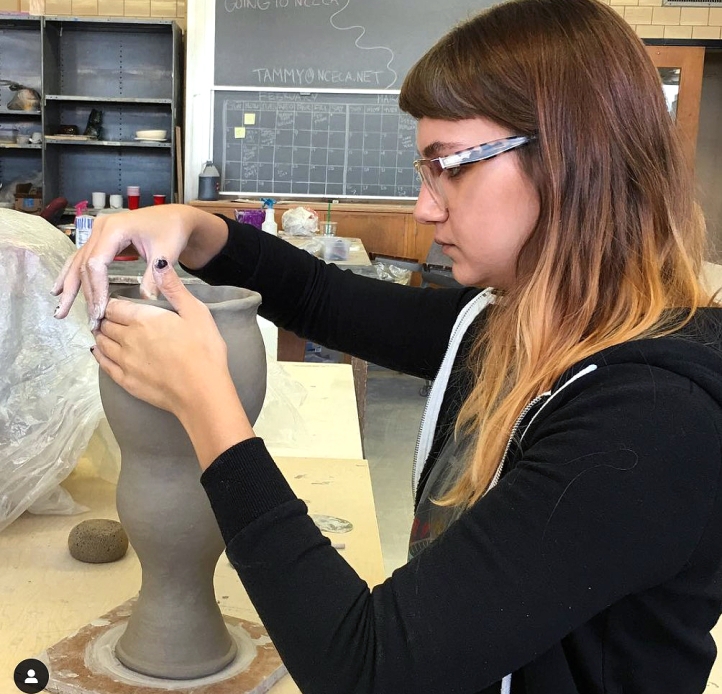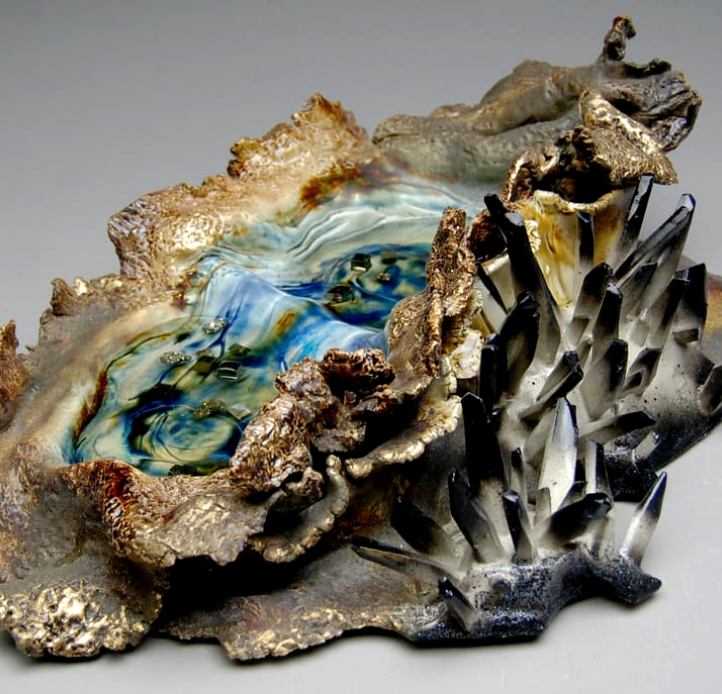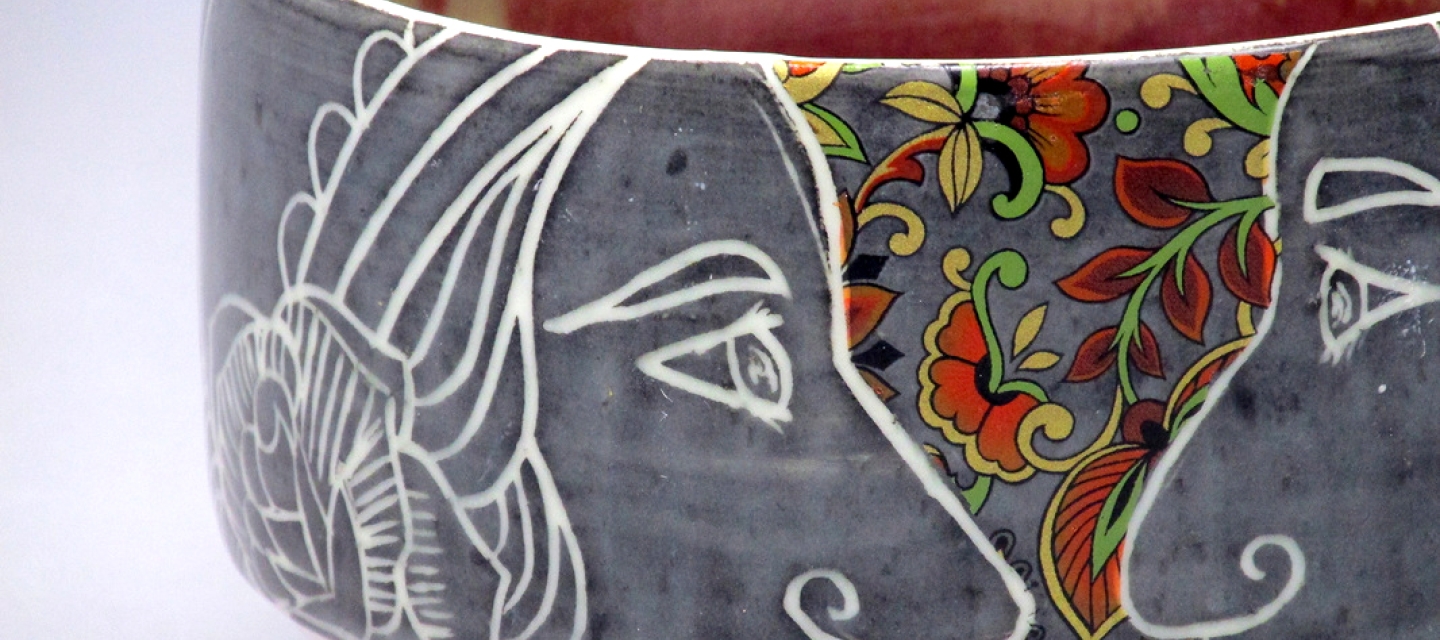
Ceramics
The ceramics concentration program prepares students to produce work of professional competence in various clay media focusing on mastery of relevant technical skills and creative expression with a strong emphasis on concept, craftsmanship, design, and aesthetics. Our goal is to inspire creativity, conceptual development, and individual expression in both functional and/or sculptural ceramics.
Ceramics Concentrations
About the Ceramics Concentration
You'll Be Prepared
Our 79-credit hour degree prepares students for advanced studies, graduate studies, or for beginning careers as professional designers or artists. The remaining credit hours are completed in required Intellectual Foundations courses.
We'll Challenge You
The primary aim of the ceramics program is to challenge the art/design student to think creatively, both critically and self-critically; to inquire, create, learn, and grow in a quest for personal expression within the field of visual art/design.
We inspire students to seek their individual identity as a visual designer/artist, whether it be functional or sculptural ceramics.
Our program goes beyond standard technical solutions so students have the training, judgment, and flexibility to perform competently in the field and to acquaint themselves with the technological knowledge necessary to succeed in areas of functional or sculptural ceramics.
Creative Energy
We provide an energetic atmosphere that will enable the art/design student to develop their creative intellect and potential, through expanding and broadening their skills and discipline, strengthening their confidence in their abilities, and developing problem solving capabilities. We instill excellence and the commitment to excellence. We encourage our students to take risks and go beyond the "standard solution".
The Artist's Language
We instill the verbal/visual vocabulary of the artist/designer, and how to use this vocabulary to translate their ideas and feelings into a synonymous three-dimensional form that reflects these ideas and feelings. This development is rooted in a strong foundation of the fundamental techniques which are necessary for personal experimentation and investigation of clay as an individual statement.
Robert L. Wood
Professor of Art and Design/Ceramics
Ceramics Program Coordinator
(716) 878-4414
Campus Address: Upton Hall 129A, woodrl@buffalostate.edu
www.robertlwood.com
Colleen Toledano
Associate Professor of Art and Design/Ceramics
(716)-878-5154
Campus address: Upton Hall 130, toledacs@buffalostate.edu
www.ctoledano.com
- Students are expected to assume the costs of materials used in courses.
- Some studio courses may have an additional charge for materials used in class.
- Students enrolled in a studio course are expected to work a minimum of two additional hours each week outside of class for each credit granted for that class and the hours gradually increase as the student progresses in the major.
- The Art and Design Department reserves the right to temporarily retain students’ work for official purposes, such as exhibitions, program display, special events, and recruitment, etc.; and to use images of the students and/or their work for publicity, documentation, and recruitment. Some programs may retain projects for longer periods of time due to accreditation and assessment requirements.
Past visiting artist demonstrators include: Andrea Keys Connell, Taylor Robenalt, Erin Furimsky, Travis Winters, Jamie Bates Slone, Patrick Coughlin, Doug Peltzman, Linda Cordell, Brian Giniewski, Christina West, Brad Schwieger, Heather Mae Erickson, Peter Pincus, Tom Bartel, Melissa Mencini, Peter Beasecker, Kensuke Yamada, Daniel Teran, Tim See, Mike Jabbur, Frederick Bartolovich, Shane Keena, Susan Beiner, Gail Heidel, Gary Schlappal, Jason Briggs, Richard Aerni, Chris Dufala, Ben Wilton, Chanda Glendinning, Carrianne Hendrickson, Rick Nickel, Jerry Smith, Ann Perry-Smith, Jeff Kell, Lori Mills, Bill Stewart, Marvin Bjurlin, Carl Shanahan, Dick Hay, Steve Glass, Mitch Messina, Bryan Hopkins, and Moi Duggan.
Ceramic Artist, Andrea Pawarski Talks About Her Love for Ceramics
Facilities and Equipment
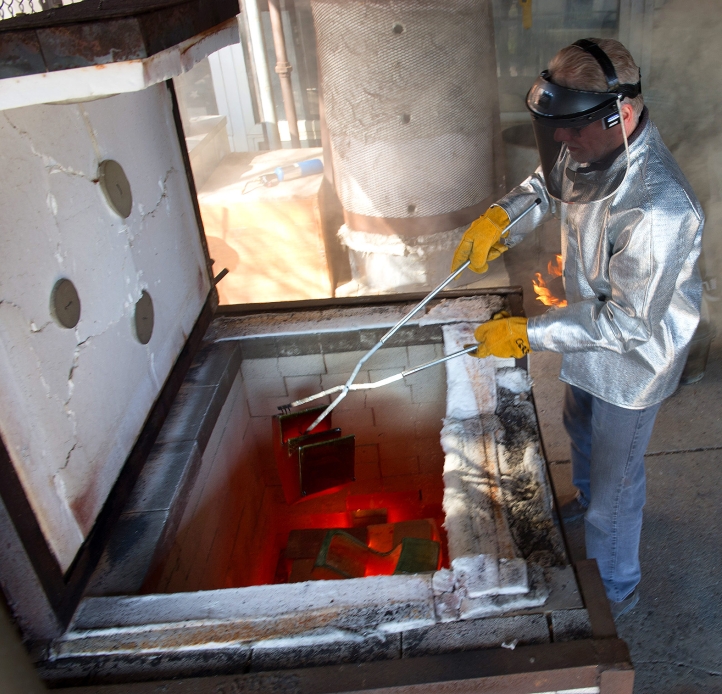
Facilities
The ceramics program occupies a 12,400-square-foot, well-equipped studio space including:
- Three primary classrooms/studios
- Glazing room
- Clay mixing room
- Glaze mixing room
- Mold making room
- Computer lab
- Resource room
- Photo area
- Indoor kiln room with 12 electric and 4 gas kilns
- Outdoor kiln area with raku, pit, soda, and wood-fire kilns.
Studios are open seven days a week, allowing unlimited access to the facilities during the academic year.
Indoor areas utilize electrostatic and/or HEPA ventilation.

Equipment
- 30 pottery wheels
- Two slab rollers
- Two extruders
- Clay mixer
- Two clay mixing puggers
- Slip mixer
- Slip casting table
- Jigger/jolly
- 24" wet lap grinder
- Wet belt sander
- Various grinders
- Tile saws, band saw
- Drill press
- Sandblaster
- Four spray booths
- Electric drying cabinets
- Ball mill
- Gram scales
- Electronic scales
- Black decal printer
- Sepia decal printer
- 3D clay printer
- Small hand tools
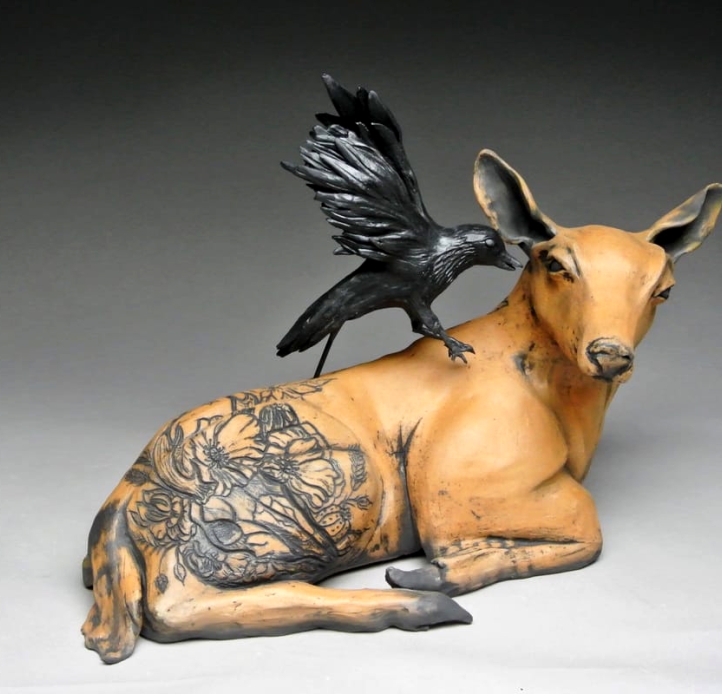
Creativity, Concept, Expression
We offer wheel-throwing, hand-building, mold making, slip-casting, clay formulation, glaze formulation, kiln theory, and studio practice. Our focus is to promote creativity, conceptual development and individual expression in both functional and sculptural ceramics.
Coalition of Ceramic Designers (C2D)
C2D is a USG-funded student organization focused on educating those interested in the ceramic arts. Students build community by bringing in ceramic artists for demonstrations and lectures, host kiln-firing events, and collaboratively present their work in local galleries.
